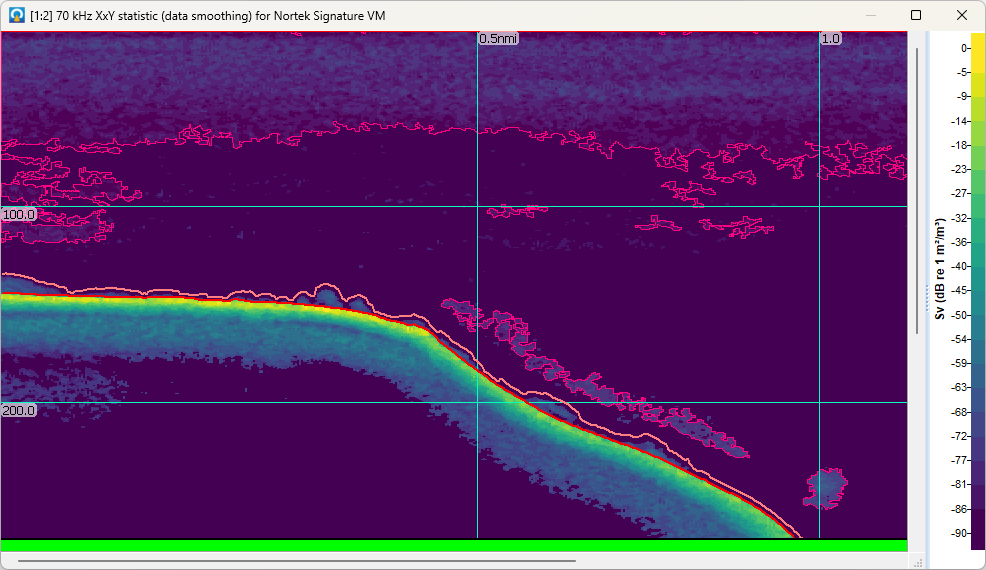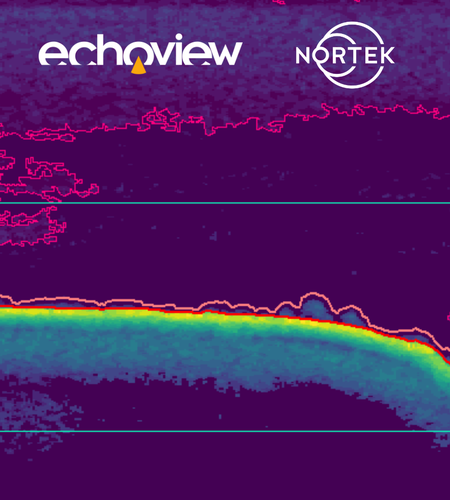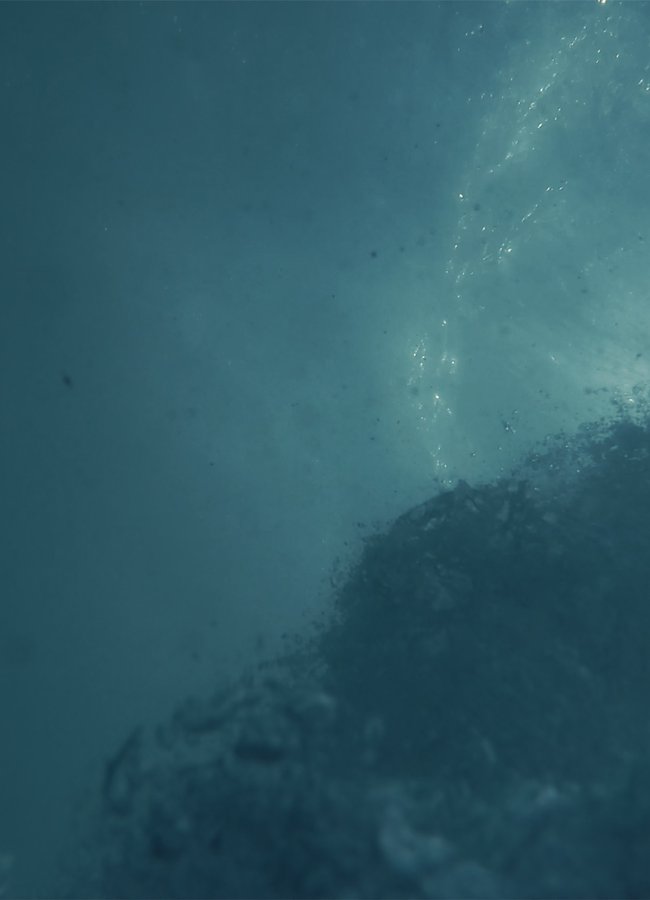Nortek's Signature hardware and Echoview’s software solutions have combined forces to offer researchers and professionals comprehensive and advanced solutions for their hydroacoustic needs.
Echosounder data is commonly used to observe and quantify water column content. This includes target strengths of individual species or objects, including fish, marine mammals, and diving birds, as well as volume backscatter of suspended sediment or biomass, including mud stirred up by tidal currents, nutrients transported via runoff, gas plumes, submerged vegetation, and plankton.
Measurements can be used to monitor individual targets and their fine-scale movements or to identify ecosystem-level spatial and temporal patterns. Physical oceanographic features are also observed in echograms: upwelling-driven stratification, tidal currents, surface runoff, and the impacts of wind-driven mixing.
Sampling the water column
Nortek’s Signature 1000 kHz, 500 kHz, and 100 kHz acoustic Doppler current profilers (ADPCs) are equipped with a fifth vertical echosounder beam that measures to the boundary while simultaneously monitoring current velocity using four slanted beams. The higher frequency instruments offer the highest resolution and are typically used for monitoring in estuaries and the coastal ocean, while the Signature100, with expected ranges of 300 to 400 meters, is deployed in deeper oceanic waters. Combining echosounder and current data allows computations of flux estimates over broad spatial and temporal scales.
Acoustic data processing
While Nortek’s packages provide averaging and echosounder backscatter correction options, further post-processing is not provided. Echoview Software have recently integrated support for Nortek’s Signature acoustic Doppler current profiler data files in Echoview®, the hydroacoustic data processing software, which is used worldwide to visualize and analyze echosounder and sonar data.
The recently released Echoview 13 is one of the biggest updates yet and includes a range of new features, such as machine learning technologies, a capability that makes standard data processing steps faster and easier through automatic identification of features in hydroacoustic data.
Echoview 13 also features support for data recorded by the 1000 kHz, 500 kHz, and 100 kHz vessel mounted and stationary Nortek Signature ADCPs, including narrowband and processed pulse compressed echosounder data, along with GPS and other ancillary measurements. Echoview contains advanced tools to make target detection quick and easy, and to rapidly quantify data and generate reports for use in statistical analyses and modelling.
Sample echosounder deployments
Deployment of a Signature100 ADCP in August 2021 in the Gulf of Lions, Mediterranean Sea revealed the water column structure over the continental shelf and shelf slope. The figure below depicts an echogram of relative volume corrected backscatter, Sv (dB re 1 m-1), and horizontal structure is seen in the upper 50 to 70 meters where solar radiation creates strong temperature gradients.

Echoview's processing tools enable easy removal of noise, and delineation of biomass in the water column as well as vegetative features along the shelf and slope.
In August 2019, the French National Center for Scientific Research added a Signature100 ADCP to the Autonomous Line with Broad Acoustic Transmission for Research in Oceanography and Sea Sciences mooring in the western Ligurian Sea.
OceanContour was used to transform, filter, and average slanted beams data, and Echoview was used to post-process echosounder data, which included identification and removal of spikes of impulse noise and estimation and removal of background noise.
As the Mediterranean Sea lacks nutrients, the primary source of backscatter is theoretically comprised of zooplankton. Diurnal patterns seen in slanted beams and echosounder data are thereby attributed to known nighttime vertical migration towards the surface. Seasonal patterns are also reflected in increased biomass in the upper layers in winter compared to fall. See Velasco et al., 2021 for further details on this project.
As the use of active acoustics is adopted across more platforms and applications, it’s vital to have a reliable solution to effectively and accurately collect and process data. Nortek's Signature hardware and Echoview’s software packages have combined forces to offer researchers and professionals comprehensive and advanced solutions for all hydroacoustic needs.

